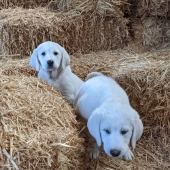Bobcats have been stealing chickens (including big roosters) every day or two at a couple of neighbors homesteads. We don't have the problem - we
have a LGD - one of the 'big white ones' - a Maremma. We haven't lost a chicken. I've learned that the 'big white ones' tend to stay close to the flock,
while other LGD breeds will pursue the predator. If a person has lots of acreage, numerous dogs would be best. One lone LGD is 'overworked' - on alert
day and night. With 2+ dogs, they have each others backs - one rests a bit, the other watches. This is an excellent overview of the need for various
breeds of LGD.
youtube
“As you simplify your life, the laws of the universe will be simpler; solitude will not be solitude, poverty will not be poverty, nor weakness weakness.” Henry David Thoreau











